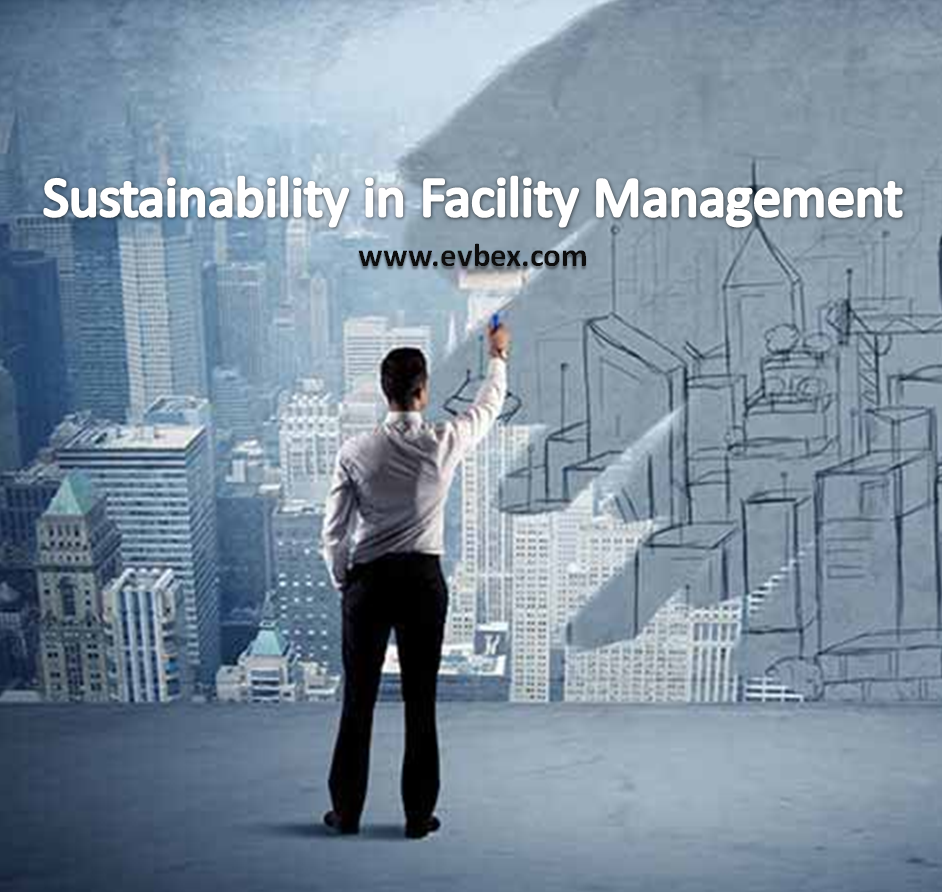Sustainability in facility management
Contents |
[edit] Introduction
Sustainability has become a high priority on organisational agendas. Some organisations have adopted the UN’s ‘Sustainability Development Goals’ and in doing so, created their own net zero goals and objectives.
[edit] Improving climate initiatives
To achieve these goals, organisations are signing up to - or adopting - various sustainability based standards or best practices in their quest to become carbon neutral, conserve water and support a clean environment.
Sustainability in facilities management (FM) in this context can be defined as the avoidance of the depletion of natural resources to maintain an ecological balance.
Whilst organisations do not generally include much on FM in their corporate agendas and published goals and targets, meeting sustainability targets and the annual reporting of progress against these targets certainly features on most companies’ websites and social media channels. Indeed, organisations with properties certified by any of these green organisations will gain positive recognition and economic gains from such certifications.
Three broad principles of sustainability in facility management can be considered as being made up of three pillars — the economy, society and the environment or as a triple bottom line of financial, environmental and social. These principles are also sometimes referred to as profit, people and planet.
Within the context of FM, there is a strong correlation with two of the three pillars, people and plant, and of course there is an indirect link with profit.
[edit] Buildings, teams and communities
Sustainability and its relationship with FM can be broken down into three areas.
[edit] Sustainable buildings: energy and environmental
Considers impacts of the built environment. Advocates sustainable energy sources. Steps are taken to incorporate energy efficient practices, including the use of renewable energy in the design and use of buildings.
Relevant standards include BREEAM, LEED (Leadership in Energy and Environmental Design) and ISO 50001:2018.
[edit] Sustainable teams: people, performance and wellbeing
In this context, employees are considered in terms of their performance and outputs against the buildings they occupy. People are our most important assets and it is therefore imperative that their wellbeing is prioritised accordingly.
The relevant standard includes The WELL Building Standard.
[edit] Sustainable communities: supply chain (including organisational responsibility and accountability considerations)
Social responsibility is also a means of achieving sustainability goals. When an organisation adopts key responsible principles such as accountability and transparency, it can demonstrate that it ensures the long-term sustainability and success of an organisation or system.
Relevant standards include SA8000 and ISO 26000.
[edit] Why is the sustainability journey fragmented?
As organisations strive to become certified and adopt standards to meet their sustainability goals, they may embark on a fragmented journey. Organisations will need to demonstrate ongoing and continued adherence to the requirements of sustainability standards as this will need to be demonstrated through periodic maintenance or surveillance audits.
There are also competing standards organisations and institutions that seek an organisation's business. This has to be considered against other objectives from an economic perspective.
Unlike FM, where there are defined service lines and roles, there are no sustainability-based natural resources, beyond management activity, which can deliver sustainability related tasks in a collective and cohesive manner. This can cause difficulties in maintaining continuity of sustainability certification in between audits.
[edit] Driving the sustainability agenda
The range of sustainability-based procedures and tasks required to maintain the relevant certifications and sustainability-based working practices to achieve the organisation's goals can and should be delivered by FM resources. Traditionally, this is often not the case, but this is an opportunity for FM to step out of the low-cost commodity shadows and show that it can deliver real additional value through ensuring that sustainability goals will be met.
Through revised FM models and structures and the re-designing FM specifications, contracts, measurement frameworks etc. FM can rise from the shadows to finally project itself as a critical resource that demonstrates value but also assists organisations in their efforts meet net zero targets.
[edit] Related articles on Designing Buildings Wiki
Featured articles and news
RTPI leader to become new CIOB Chief Executive Officer
Dr Victoria Hills MRTPI, FICE to take over after Caroline Gumble’s departure.
Social and affordable housing, a long term plan for delivery
The “Delivering a Decade of Renewal for Social and Affordable Housing” strategy sets out future path.
A change to adoptive architecture
Effects of global weather warming on architectural detailing, material choice and human interaction.
The proposed publicly owned and backed subsidiary of Homes England, to facilitate new homes.
How big is the problem and what can we do to mitigate the effects?
Overheating guidance and tools for building designers
A number of cool guides to help with the heat.
The UK's Modern Industrial Strategy: A 10 year plan
Previous consultation criticism, current key elements and general support with some persisting reservations.
Building Safety Regulator reforms
New roles, new staff and a new fast track service pave the way for a single construction regulator.
Architectural Technologist CPDs and Communications
CIAT CPD… and how you can do it!
Cooling centres and cool spaces
Managing extreme heat in cities by directing the public to places for heat stress relief and water sources.
Winter gardens: A brief history and warm variations
Extending the season with glass in different forms and terms.
Restoring Great Yarmouth's Winter Gardens
Transforming one of the least sustainable constructions imaginable.
Construction Skills Mission Board launch sector drive
Newly formed government and industry collaboration set strategy for recruiting an additional 100,000 construction workers a year.
New Architects Code comes into effect in September 2025
ARB Architects Code of Conduct and Practice available with ongoing consultation regarding guidance.
Welsh Skills Body (Medr) launches ambitious plan
The new skills body brings together funding and regulation of tertiary education and research for the devolved nation.
Paul Gandy FCIOB announced as next CIOB President
Former Tilbury Douglas CEO takes helm.
UK Infrastructure: A 10 Year Strategy. In brief with reactions
With the National Infrastructure and Service Transformation Authority (NISTA).























